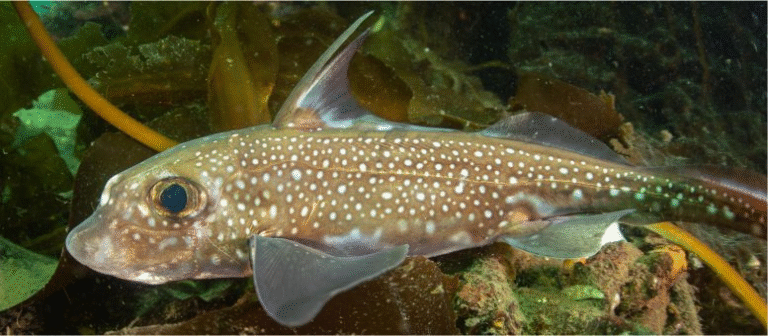Scientists Identify Genetic Switches Behind Rapid Facial Development in Marsupials

Researchers have discovered the genetic elements that help marsupials develop their facial structures at lightning speed soon after birth. The study, published in eLife in 2025, focuses on the fat-tailed dunnart (Sminthopsis crassicaudata), a small carnivorous marsupial native to Australia. The findings provide valuable insights into how evolution has shaped marsupials and placental mammals to grow differently and adapt to their unique life strategies.
Understanding Marsupial vs. Placental Development
Marsupials and placental mammals follow very different paths when it comes to reproduction and growth. Marsupials have extremely short gestation periods, meaning their young are born in a highly underdeveloped state. After birth, the newborns crawl into the mother’s pouch to continue developing. Placental mammals, on the other hand, develop inside the uterus for much longer, emerging far more mature at birth.
Because marsupials must make their way to the pouch immediately after birth, some parts of their body—especially the face, mouth, and forelimbs—need to develop faster than others. This accelerated orofacial development allows them to find and attach to their mother’s teat to survive. Their central nervous system, however, lags behind, catching up later in the pouch.
The Focus of the Study
The new research by Laura Cook, a scientist who completed this work at the University of Melbourne and now works at Lawrence Berkeley National Laboratory, dives into the genetic and regulatory factors behind this rapid facial growth. The team wanted to understand how marsupials control gene activity during early craniofacial development and how this compares to placental mammals such as mice.
To do this, the scientists built a new genome assembly for the fat-tailed dunnart. This was a big step forward because high-quality marsupial genome data is still limited. With this genomic foundation, the team then collected craniofacial tissue from newborn dunnarts—specifically from three regions crucial to face formation: the fronto-nasal region, mandibular prominence (lower jaw), and maxillary prominence (upper jaw and cheeks).
The Techniques Used
Two powerful sequencing techniques were used to study gene activity and regulation:
- ChIP-sequencing (ChIP-seq): This technique identifies chemical markers on DNA called chromatin marks, which influence whether genes are turned on or off. The researchers focused on two histone modifications: H3K4me3, typically linked to active gene promoters, and H3K27ac, associated with active enhancers that control gene expression from a distance.
- RNA-sequencing (RNA-seq): This method captures which genes are actively being expressed in the tissue at the time of sampling.
To make meaningful comparisons, the dunnart data was analyzed alongside mouse craniofacial ChIP-seq data from the ENCODE consortium, which includes data from multiple developmental stages (embryonic days E10.5 to E15.5).
What the Scientists Found
The research revealed a detailed map of the dunnart’s craniofacial gene regulation:
- The team identified around 60,600 potential enhancers (regions marked by H3K27ac) and 12,295 promoters (regions marked by H3K4me3).
- Before filtering, they found nearly 81,000 reproducible H3K4me3 peaks and over 121,000 H3K27ac peaks.
- On average, enhancers were located 77 kilobases away from the nearest gene start site (TSS), while promoters averaged around 106 kilobases, showing the wide range of genetic control distances.
When the researchers compared these regulatory landscapes with those of the mouse, they noticed a striking pattern. The genes involved in craniofacial development were largely conserved—in other words, both species use similar genes to build the face. But the regulatory elements controlling those genes were very different.
Only about 13% of dunnart enhancer regions aligned with the mouse genome, and among those, less than 7% were active in both species. In contrast, nearly half of all promoter regions were shared. This suggests that while both animals rely on the same core genes for facial formation, they use different enhancer networks to control when and how those genes are activated.
Dunnart-Specific Gene Regulation
One of the most intriguing findings was the discovery of dunnart-specific enhancers near genes that are highly active in the marsupial but lowly expressed or inactive in the mouse. These genes are linked to three main developmental areas:
- Skin and epidermis development: Dunnart pouch young have unique skin characteristics, including prolonged presence of the periderm—a temporary outer skin layer. In marsupials, this layer remains longer after birth and helps with gas exchange in the early stages of life.
- Sensory system development: Marsupial newborns must rely heavily on their senses—especially smell—to find the pouch after birth. Genes that enhance sensory and olfactory system development showed strong activation in the dunnart.
- Muscle development and contraction: Early development of facial and pharyngeal muscles allows the newborn to cling to the teat and suckle, vital for survival.
Among the genes showing unique expression was KRT17 (keratin 17), a key player in skin and periderm development. This further supports the idea that marsupial-specific enhancer activity promotes traits essential for their postnatal survival.
Why It Matters
The findings highlight how changes in gene regulation—not just gene sequences themselves—can shape evolution. The dunnart’s accelerated facial development is a perfect example of how species evolve unique regulatory “switches” to meet survival challenges. For marsupials, this means developing a face and mouth ready to feed almost immediately after birth.
These results also reinforce the value of comparative genomics—studying different species to understand the genetic basis of diversity. By comparing marsupials with placentals, scientists can trace how evolutionary tweaks in enhancer activity have produced the vast variety of mammalian developmental strategies we see today.
Limitations and What Comes Next
The study focused on a single developmental time point (newborn pouch young less than 24 hours old). This was mainly due to the difficulty of obtaining samples from different stages. The researchers acknowledge that including multiple postnatal stages would give a more complete picture of how gene regulation changes over time.
Looking ahead, the team plans to apply single-cell, multi-modal technologies—combining RNA-seq and chromatin mapping at the individual cell level—to pinpoint the specific regulatory differences between the dunnart’s nervous system and its facial development. These methods could help unravel exactly how enhancer activity coordinates rapid tissue growth in one part of the body while other systems develop more slowly.
A Broader Look at Marsupial Biology
Marsupials like the dunnart, kangaroo, and koala are remarkable examples of evolutionary diversity. Their short gestation and long pouch development have given scientists an alternative window into mammalian development and evolution. While placentals evolved to protect and nourish offspring internally for extended periods, marsupials shifted much of that process to the external pouch, reshaping their developmental timeline.
This unique biology makes marsupials valuable for studying heterochrony—the evolutionary shift in the timing of developmental events. Understanding how marsupials regulate their gene expression differently helps explain how similar genes can create very different life strategies.
The Bigger Picture
By producing a high-quality dunnart genome and mapping its facial development in such detail, this study adds a crucial piece to the puzzle of mammalian evolution. It shows that evolution doesn’t always invent new genes; sometimes it just rewires the control panels—the enhancers and promoters—to change how and when existing genes are used.
The data generated will serve as an invaluable resource for future studies exploring mammalian development, evolution, and even biomedical research focused on craniofacial disorders. The research team’s approach opens the door to discovering how subtle regulatory shifts can lead to the extraordinary diversity of life we see among mammals today.
Reference:
Gene regulatory dynamics during craniofacial development in a carnivorous marsupial – eLife (2025)





